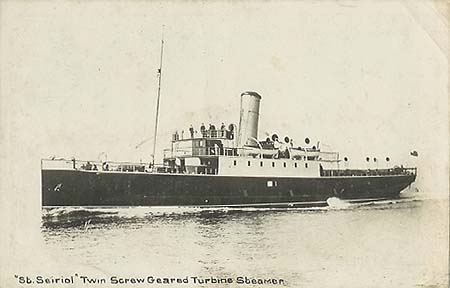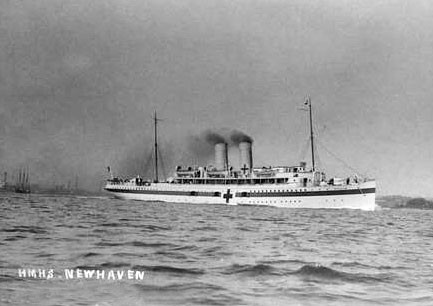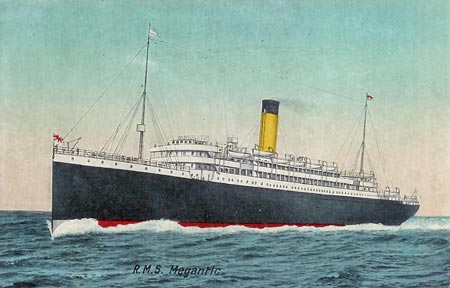|
Jul 15, 1876
|
Born in Basingstoke, Hampshire, England to
William and Alice (nee White) Loveridge
|
|
Jul 7, 1905
|
Shown on the payroll of the 45th
Victoria Haliburton Regiment in Cobourg, Ontario with the rank of Colour
Sergeant
|
|
Nov 5, 1914
|
Attested into the 21st Battalion in Kingston, Ontario
Ø Number 59604 (temporary number 608)
Ø No next of kin given
o Later given as John Robinson, friend, Lindsay, Ontario
Ø Previous occupation given as Section Hand
o Later noted as Section Foreman
Ø Previous military experience given as 4 years in the 45th
Victoria Haliburton Regiment
Ø Religion given as Wesleyan
Ø Posted to “E” Company
o This was later reorganized into “C” Company
On attesting, he lied about his age, stating he had been born in
1878, not his actual birth year of 1876
The 21st Battalion trained in the Kingston, Ontario
area through the winter of 1914-15.
|
|
Nov 17, 1914
|
Appointed to rank of Acting Corporal
|
|
Jan 11, 1915
|
Admitted to Kingston Hospital with a diagnosis that reads Inflamed
Tonsils
|
|
Jan 14, 1915
|
Discharged to duty from hospital
|
|
Mar 15, 1915
|
Reverted to the rank of Private at his own request
|
|
Apr 14, 1915
|
Sentenced to 10 days detention and forfeited 17 day’s pay for an
unrecorded offence
|
|
May 6, 1915
|
Embarked the RMS Metagama in Montreal, Quebec

|
|
May 15, 1915
|
Disembarked in Devonport, England and the
battalion proceeded to the West Sandling Camp, near Hythe, Kent to continue
training
|
|
Sep 14, 1915
|
Embarked the St. Seiriol in Folkestone

|
|
Sep 15, 1915
|
Disembarked in Boulogne, France and the battalion
proceeded to St. Omer
|
|
Apr 13, 1916
|
While the battalion was resting in the “B” Camp
at La Clytte, Belgium, Private Loveridge reported sick to the Medical Officer
complaining of sleeplessness, headaches and nervousness. He was evacuated to a field ambulance
before being transferred to a casualty clearing station for treatment
|
|
Apr 14, 1916
|
Transferred to the No. 14 General Hospital
suffering from Shell Shock. Patient
claims to have been buried by shell explosion during fighting at St. Eloi, Belgium
and has not been well since
|
|
Apr 19, 1916
|
Invalided to England aboard the Hospital Ship
Newhaven

On arrival in England, he was admitted to the
Huddersfield War Hospital in Huddersfield
Transferred to the CCAC (Canadian Casualty
Assembly Centre) for pay purposes while in hospital
|
|
May 11, 1916
|
Transferred to the King’s Canadian Red Cross
Hospital in Bushey Park
On admission he is noted as “suffering from great
dread and nervous debility. Appears to
be thoroughly unstrung.”
|
|
Aug 29, 1916
|
Discharged from hospital and reported to the
Canadian Casualty Assembly Centre in Folkestone
|
|
Sep 4, 1916
|
Admitted to the Military Convalescent Hospital in
Woodcote Park, Epsom for 6 weeks of physical training
|
|
Oct 17, 1916
|
Medical Board in Epsom notes
Ø Man suffers from Shell Shock
Ø Is in a very nervous condition
and breaks down when questioned
Ø Sleeps poorly, has headaches
and poor hearing
Ø Medical Officer considers him
unfit for service on account of his age and condition
|
|
Nov 5, 1916
|
Awarded the Good Conduct Badge
|
|
Nov 7, 1916
|
Discharged to light duty from hospital
|
|
Dec 28, 1916
|
Transferred to the 1st CLB (Canadian
Labour Battalion) in Shoreham
|
|
Jan 8, 1917
|
Embarked in Folkestone and disembarked in Havre,
France with the 1st Canadian Labour Battalion
|
|
Aug 4, 1917
|
Attached to the No. 12 CCS (Casualty Clearing
Station) for temporary duty as a stretcher bearer
|
|
Oct 8, 1917
|
Ceased to be attached and rejoined the labour
battalion
|
|
Jan 31, 1918
|
Granted 14 days leave to the UK
|
|
Feb 8, 1918
|
Rejoined the labour battalion from leave
|
|
Feb 13, 1918
|
Medical Board reclassified him B1, meaning he was
not fit for combat duty, but fit for labour battalion in England or France
|
|
Mar 26, 1918
|
The 1st Canadian Labour Battalion was
renamed the 1st Canadian Infantry Works Battalion
|
|
Apr 27, 1918
|
Transferred to the CGBD (Canadian Garrison Base
Depot)
|
|
Apr 28, 1918
|
Medical Board reclassified him as B2 meaning he
was fit for light duties behind the lines because of his age and ongoing
issues with Neurasthenia
|
|
Jul 27, 1918
|
Transferred to the 7th Canadian Area
Employment Company
|
|
Aug 1, 1918
|
Admitted to the No. 74 Field Ambulance with a
diagnosis that reads ICT (Inter Connective Tissue) infection in fingers of
right hand. He was transferred the
same day to the No. 7 Casualty Clearing Station
|
|
Aug 2, 1918
|
Transferred via the No. 17 AT (Ambulance Train)
and admitted to the No. 20 General Hospital in Camiers, France
|
|
Aug 14, 1918
|
Discharged from hospital and joined the CGBD
(Canadian General Base Depot) in Etaples
|
|
Sep 4, 1918
|
After leaving the base depot, Alfred Loveridge
rejoined the No. 7 Canadian Area Employment Company in Aubigny, France
|
|
Sep 26, 1918
|
Transferred to the 8th Canadian Area
Employment Company in Estree Cauchy, France
|
|
Dec 17, 1918
|
Transferred to the Canadian General Depot in
Etaples then proceeded to England and transferred to the 4th
Reserve Battalion
|
|
Feb 15, 1919
|
Transferred to Military District No. 2 in Kinmen
Park, Rhyl pending return to Canada
|
|
Feb 25, 1919
|
Embarked the SS Megantic in Liverpool

|
|
Mar 5, 1919
|
Disembarked in Halifax, Nova Scotia and proceeded
to Toronto, Ontario where he was posted to the Military District No. 2
Casualty Company at the Exhibition Park
|
|
Mar 8, 1919
|
Granted leave until March 22, 1919
|
|
Mar 20, 1919
|
Medical Board at the Exhibition Camp, Toronto
notes
Ø Man suffers from loss of function
of his nervous system due to Neurasthenia
Ø Complains of headaches and is
easily excited by noises caused by machinery or band playing
Ø Suffers from twitching muscles
in legs, arms, face and lips
Ø There is a well defined
functional neurosis caused by active service
Ø Board recommends he be
discharged from service as Medically Unfit
|
|
Mar 25, 1919
|
Discharged from the CEF in Toronto, Ontario
Ø Rank on discharge Private
Ø War Service Badge Class “A”
issued number 235135
Ø Proposed residence on
discharge Lindsay, Ontario
Following his discharge, the 1914-15 Star,
British War Medal and Victory Medals were sent to him at Lindsay, Ontario
|
|
Dec 27, 1944
|
Alfred George Loveridge died while a patient of
the Ross Memorial Hospital in Lindsay, Ontario of Hydrocephalus. His permanent residence was given as House
for the aged in Lindsay
He was buried 2 days later in the Riverside
Cemetery in Lindsay
|
|